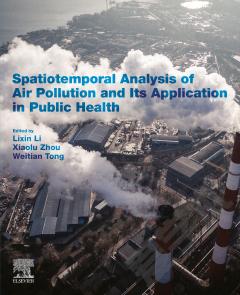Spatiotemporal Analysis of Air Pollution and Its Application in Public Health
Spatiotemporal Analysis of Air Pollution and Its Application in Public Health reviews, in detail, the tools needed to understand the spatial temporal distribution and trends of air pollution in the atmosphere, including how this information can be tied into the diverse amount of public health data available using accurate GIS techniques. By utilizing GIS to monitor, analyze and visualize air pollution problems, it has proven to not only be the most powerful, accurate and flexible way to understand the atmosphere, but also a great way to understand the impact air pollution has in diverse populations. This book is essential reading for novices and experts in atmospheric science, geography and any allied fields investigating air pollution.Introduces readers to the benefits and uses of geo-spatiotemporal analyses of big data to reveal new and greater understanding of the intersection of air pollution and healthTies in machine learning to improve speed and efficacy of data modelsIncludes developing visualizations, historical data, and real-time air pollution in large geographic areas
{{comment.content}}








 京公网安备 11010802027623号
京公网安备 11010802027623号